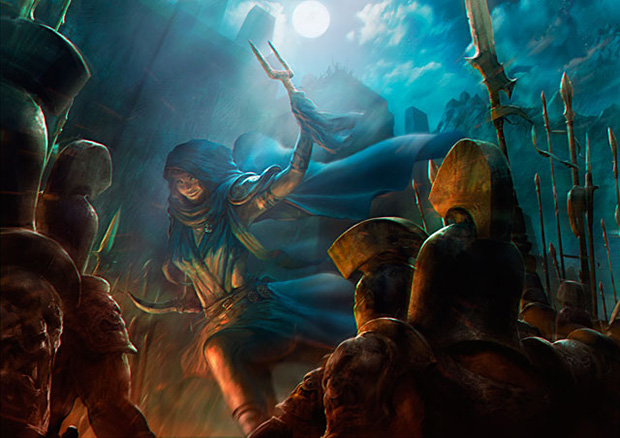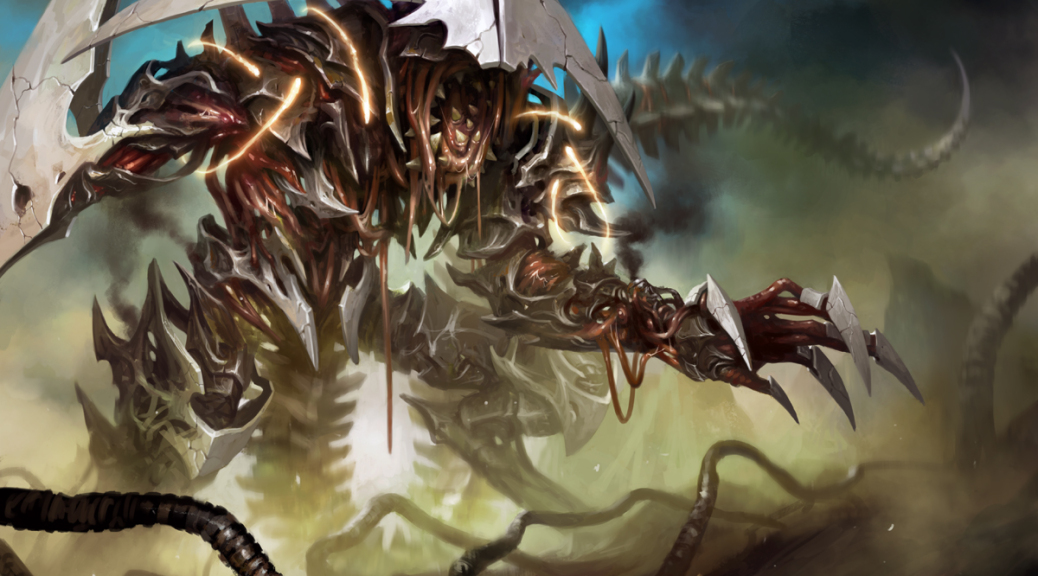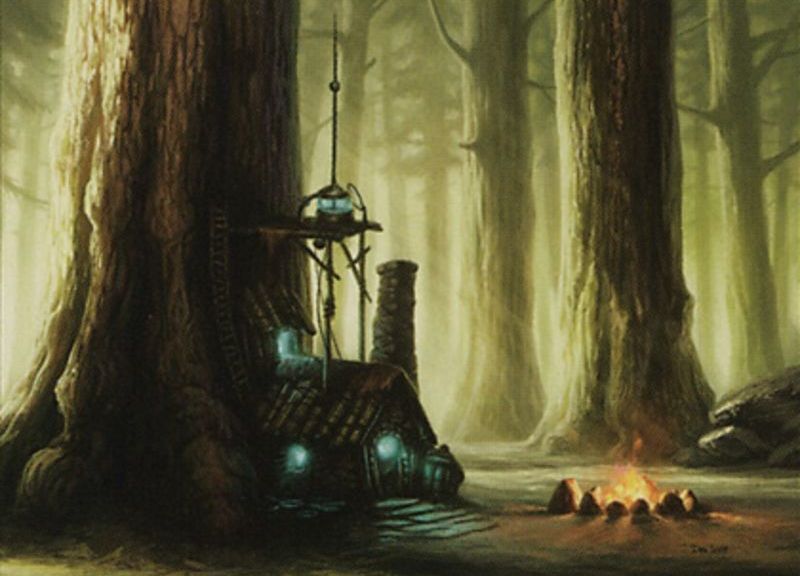By: Cliff Daigle
I have two simple questions for you today: First, what is the monetary value of your collection?
We have a tool for this here at MTGPrice; if you’ve entered every card you own into our system you’ll have access to your collection’s value as it fluctuates, as well as telling you what you could get on buylists for your cards.
For me, the value is all in my EDH decks. I’ve added value to them pretty consistently over the past few years, and I’ve got more than one with a retail value of over a grand. You may think that’s bragging, you may think that’s underpricing it, but $10 here and $40 here adds up fast in a 100-card deck. Cubes are another item that holds a lot of value in a small space, especially if you’re someone who spent the money to foil it out.
If you haven’t done so before, take stock of your decks and your binders. Don’t forget about the large boxes of cards that you have somewhere, the bulk that may or may not be picked and sorted.
Depending on how long you’ve been at this, that value could be small, or it could be large, or it could be enough to pay the down payment on a house.
My second question to you: Are you prepared for something to happen to part or all of your collection?
I’m not trying to alarm you. I’m trying to give you an idea of how incredibly fragile these pieces of cardboard are, and how ridiculously simple it is to keep your investment safe.
Three years ago, I was at my old LGS. (Local Game Store) I was upstairs playing EDH as was my wont, when someone came into the store looking to sell some cards. The guy on duty for that was a local L1 judge, who noticed that the cards for sale made up a five-color Sliver deck, and the deck was fully outfitted with foils, duals, fetches, the works. Pretty pricey, even then, and exactly in line with a deck that a store regular had told everyone was stolen recently.
This judge contacted the police, who arrived quickly, and the regular was called in too. The store and the patrons were all paused in what they were doing, watching this unfold. We, the players in the audience, were salivating over the chance to see a card thief get their deserved punishment. The stolen deck was still sleeved in custom sleeves, and apparently there was a picture of the regular, holding up these sleeves. A slam-dunk!
An hour later, the alleged thief was walking out with the deck in hand. No charges, no problem, a simple “Don’t ever come back to this store” as the only punishment that could be given out.
Think about that for a moment. Think about being that guy, seeing your hard-earned and beloved deck in someone else’s hands, and you have no legal recourse.
Our delight in this game is based on mere pieces of paper. These do not bear any identifying marks; no serial numbers, no barcodes, no certificates or proof of anything. If you do decide to mark them, you’re going to depreciate the value considerably. Once your cards are out of your possession, you’re going to have a difficult time proving ownership.
Theft is a huge problem for our game. There are very few Magic players who haven’t experienced theft on some level. I’ve been through it on more than one occasion, once having someone dip a hand into my long deck box and grab a random handful, while my attention was on a game.
There are instances of cards being stolen out of backseats, out of trunks, out of storefronts, and out of binders. It’s a long-standing rule that you don’t let someone else look at your binder while you’re engaged in a trade, because there’s a chance of having a card dipped out of your pages. Letting someone take a look through your EDH deck carries the same risk. I sympathize, as I love showing my cards off, but it’s got the potential to lead to problems.
Don’t forget that other problems can lead to damage to your precious cardboard. Sunlight can melt a binder left in a car. Earthquakes can cause your neatly organized binders to fall out of the bookcase and onto the floor, bending or breaking your cards. Floods and fires can destroy your collection utterly, down to that box of basic lands.
So what’s a player to do? There are some very basic steps you can take.
#1: Renter’s Insurance
You’re required to carry auto insurance by law. Renter’s insurance is far cheaper and will probably get used less, but when you need it, you REALLY need it. Yes, it’s going to require some paperwork and organization, as well as regular updating (Did you just trade for a MP Beta Scrubland? Add it in!) but it’s worth every dollar and every hassle.
I don’t want to link specific companies, but start with your auto insurance company. Call them and ask if they offer renter’s insurance as well. It will not be expensive, unless you have a massively valuable inventory, in which case you really ought to insure it! If you’re willing to spend $100 on Ebay for a Japanese Foil Akroma, Angel of Wrath from Legions, then you should be willing to spend some money on the insurance.
I want you to seriously think about the value of your collection. If it is very valuable, then you should protect it. Only if you have very low value should you ignore insurance. Most of us will be under $200 a year, and you can think of that as a little more than a draft per month. Different companies will require different levels of paperwork, and your experiences may vary.
This is a simple, cheap, and effective way to protect yourself from any type of loss. When I realized what my decks were worth, I signed up for renter’s insurance. There’s a protection to all of your belongings, not just your cards. It’s not expensive, especially compared to the cost of repair or replacement.
Insuring my cards, as well as my belongings, gave me a strong sense of relief. It’ll make you feel good too.
#2: Basic Security
This weekend is Grand Prix Los Angeles. I am willing to bet a large amount of money that after the event, or even during the event, there will be a Reddit post or a tweet sent out or something where a Magic player is asking for help finding their stolen or lost deck/Cube/binder. It’s guaranteed and it’s mostly preventable.
Don’t have multiple trades going on. Don’t leave extra decks/cards on the table. Don’t leave your bag unattended, and when sitting, wrap your leg in the strap, so in case of someone trying to grab and run, they pull your leg. Don’t brag about stuff in your car. Don’t flash the bling left and right.
It’s helpful to have bracelets and tags to match up the owners of bags, but it’s a matter of seconds to take the cards out and then ownership is difficult to determine. Please don’t have these things happen to you, at GP LA or an SCG Open or anything. If you’re a dealer, have sufficient staff. If you’re not a dealer, don’t bring thousands of dollars of cards and leave it in your car, because cards have been stolen from targeted individuals.
#3: Advanced Technology
There are a number of things that are being sold or developed to deal with the security of your cards. DeckTracker is one, LassoTag is another, and they are designed to help keep things near to you.
This is handy, but not as effective as simple security. I’m pretty good with technology, but I can’t get my car to consistently pair via Bluetooth with my phone. I don’t know how effective these methods are, but they are a backup to the basic ideas.
#4: Community Help AFTER something happens
If, heaven forbid, your deck/cube/binder/bag is stolen, you have some last-minute options. Reddit often has those threads, or Facebook posts, or Twitter, or other social media tools. There’s a chance that you’ll get it back. There’s a chance that Wizards will send you some stuff to make up of some of your loss.
There’s a chance of all that. It’s not for sure.
I’m not trying to be an alarmist, but I am trying to worry you a little. You should be worried if you’re wearing thousand-dollar jewelry, and you would worry if you had $500 in $20 bills kept inside a little plastic box in your backpack and everyone around you knew you put it in there.
Be appropriately concerned, and protect yourself and your investment.
And have fun at that Grand Prix or FNM!





